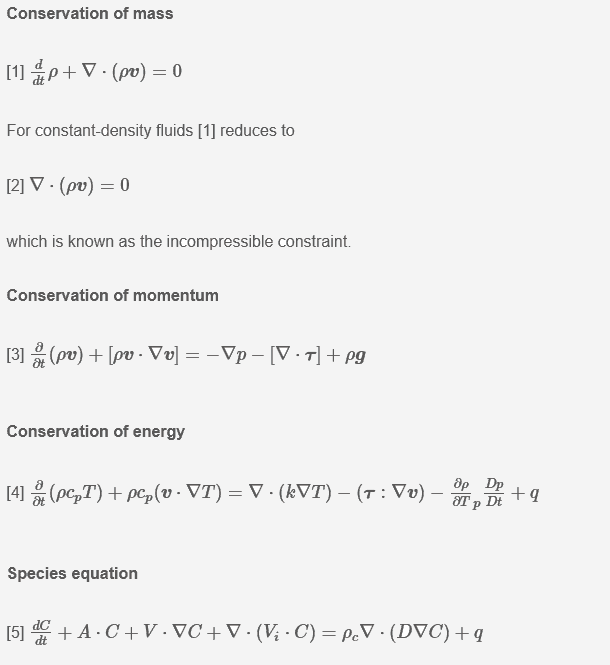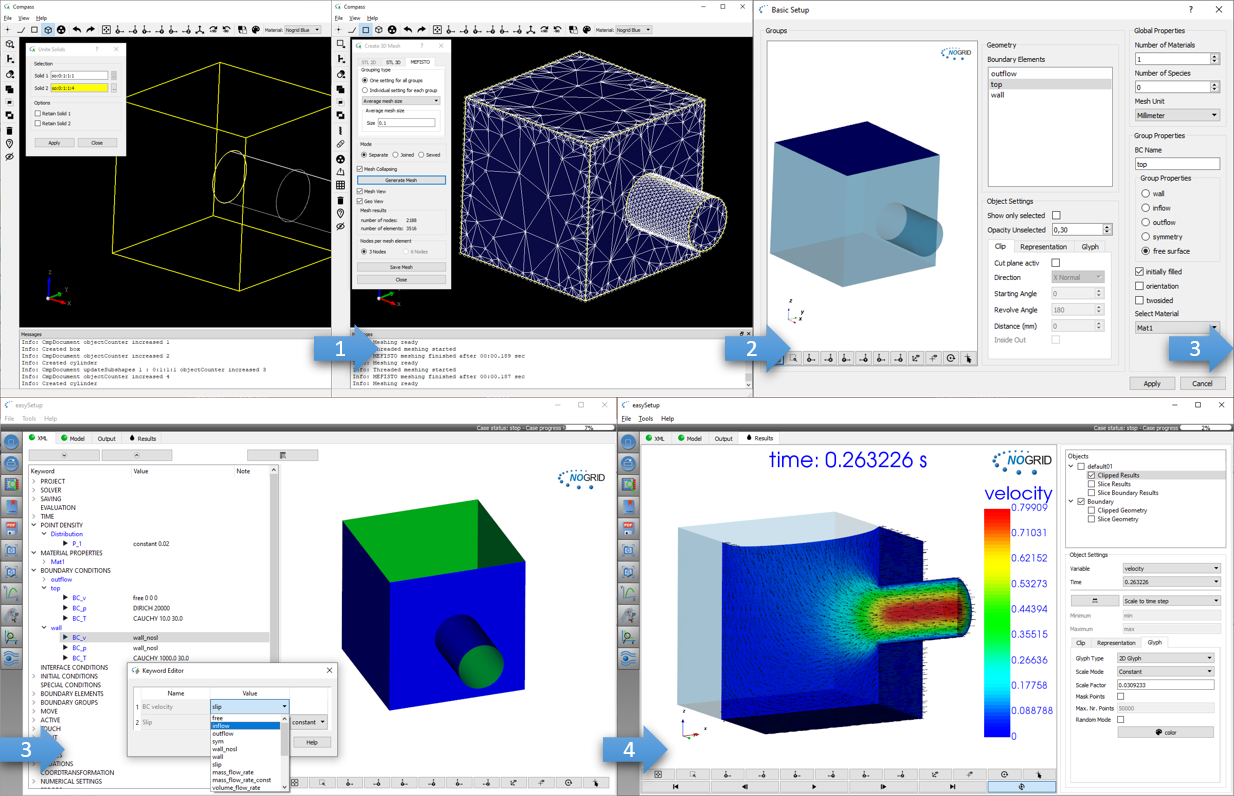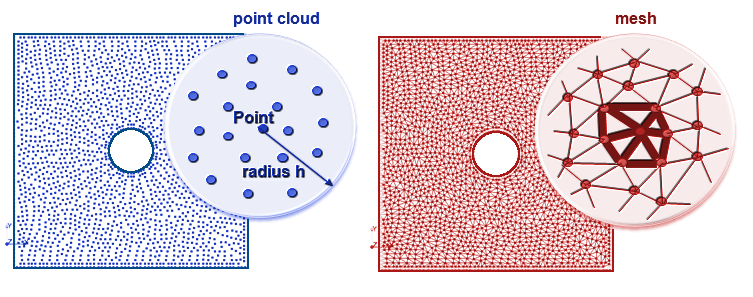Theory NOGRID Simulation Solver Technology
The fundamental basis of almost all CFD problems are the Navier–Stokes equations, which are a statement of the balance of momentum, but sometimes the equations for conservation of mass and the balance of energy are added.
In order to solve the Navier–Stokes equations the fluid domain must be discretized, which means the volume occupied by the fluid is divided into discrete cells (the mesh). The Finite Volume Method (FVM) is a common approach used in CFD codes, as it has an advantage in memory usage and solution speed, especially for large problems, high Reynolds number turbulent flows and source term dominated flows (like combustion). The Finite Element Method (FEM) is used in structural analysis of solids, but is also applicable to fluids. The Finite Difference Method (FDM) has historical importance and is easy to implement. It is currently only used in few specialized codes, which handle complex geometry with high accuracy and efficiency.

MESHLESS MODELING AND SIMULATION
Numerical fluid mechanics (Computational Fluid Dynamics, CFD) is a well known and established method within fluid mechanics and is used to solve fluid mechanical problems approximately with numerical methods. The model equations are the Navier-Stokes equations, which are nonlinear partial differential equations of second order, that prescribe a fluid completely.
An important step in handling partial differential equations is to use discrete algebraic replacements for the continuous differential equations. Several methods are currently in use, such as the finite volume (FV), finite element (FE), and finite difference (FD) method. We use a general finite difference (gFD) method to discretize the Navier-Stokes equation. General means that we operate on an unstructured points basis, whereas the classical FD-method operates on structured points only.
Figure 2: Point cloud versus finite element mesh
Our meshless CFD software NOGRID points, as well as NOGRID pointsBlow, is based on the Finite Pointset Method, a method, which generates a local defined, non-stationary point cloud distribution for discretization of the Navier-Stokes equations. The method itself is based on the general finite difference method and the key features are:
- Instead of a mesh NOGRID points discretizes the continuum domain by a point cloud
- The point density is prescribed by a smoothing length defined locally and can vary from one time step to another
- NOGRID points does not use a rigid neighborhood list for a certain point (=node) as it is required in a mesh based method. All neighbors are allowed to move and the neighborhood list is recomputed at each time step
Thus, the simple idea of the NOGRID method is to use a dynamical discretization method.
The point cloud is generated automatically by the software depending on user's settings. That's why there is no need to generate a mesh as required in classical CFD methods. NOGRID finite points are automatically filled, moved, refilled and cleaned depending on user specifications. The point cloud can be defined variously, e.g. constant in the whole flow domain, changing with time or increasing/decreasing locally depending on the flow/geometry situation.
Nogrid's strengths

Easy and fast modelling: Build geometry, mesh boundary, setup the case and start computation
What is CFD from NOGRID?
CFD solves the fundamental equations that define the fluid flow process. With CFD software from NOGRID every engineer makes better decisions by predicting, analyzing and controlling fluid flow, heat and mass transfer or chemical reaction. By using NOGRID software for flow modeling you receive information on essential flow characteristics as for example flow distribution. Using it additional to testing and experimentation NOGRID software helps to improve the evaluation of your design – resulting in better construction and operation parameters, increasing planning security and money savings due to faster time to the marketplace for your product or process.
Choose NOGRID
With NOGRID, you choose professional CFD software and services – our aim is helping you to be successful. When you decide to work with NOGRID you choose close cooperation with a dynamic, flat hierarchies-organization. Short information channels result in quick and accurate professional support and service. Our team consists of highly qualified employees, who are experts in fields such as numerical simulation or computational fluid dynamics. Based on our know-how, we are pleased to offer the following services, responding to your individual requirements:
TRAINING
In our two-days training courses you will learn, how to use NOGRID CFD software efficiently. Our technical support team will teach you how to handle and solve different cases.
For more details please refer to Training Courses →
Technical Support
We offer full professional support from the minute you start using our software, by telephone or by email. Contact us, when ever needed.
For more details please refer to Software Support →
Service
Lack of time or resources and other constraints often make outsourcing an attractive solution. We help you with your flow modeling needs. Based on our engineering expertise in this field we offer individual numerical simulation services matching the unique needs of your organization.
For more details please refer to Simulation Services →

